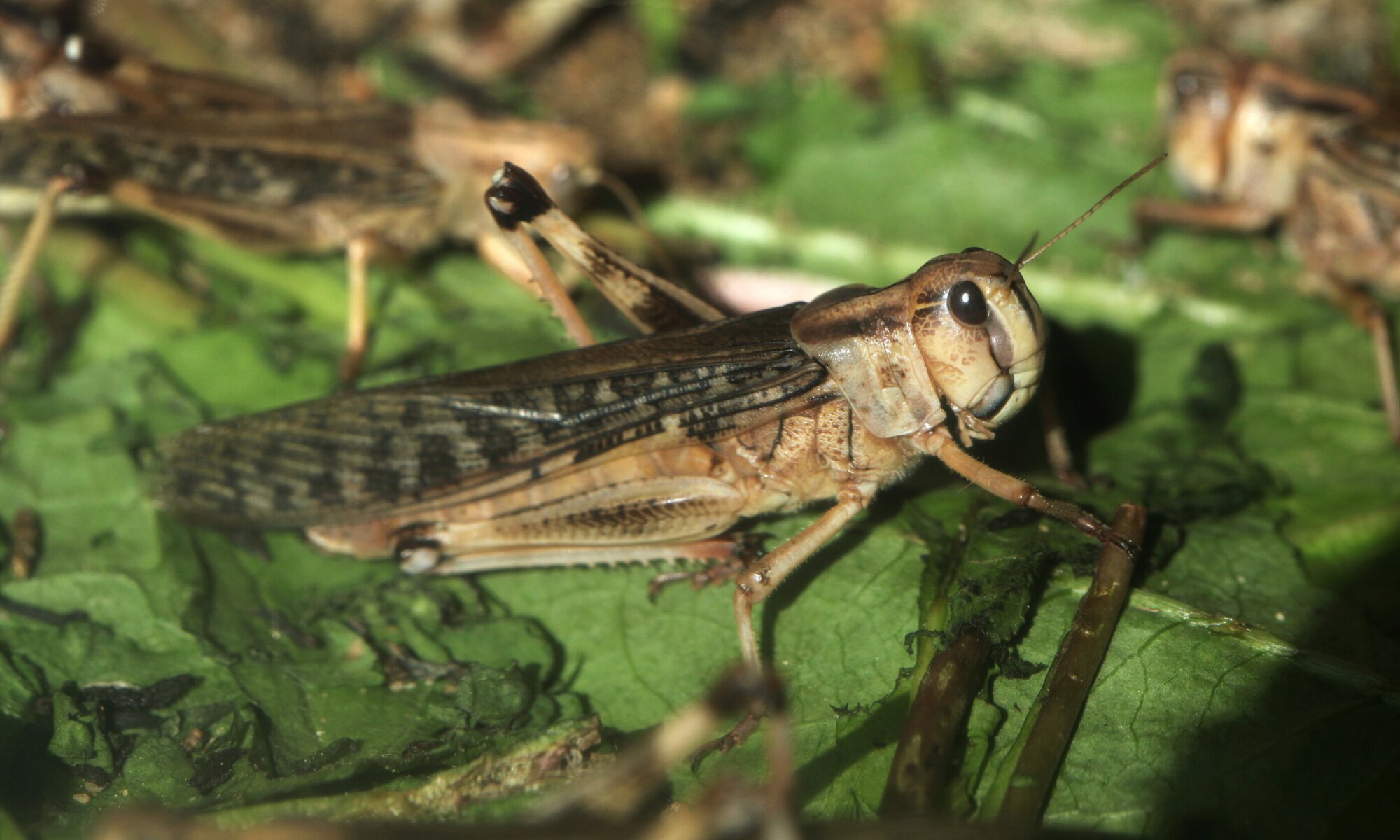From UPSC perspective, the following things are important :
Prelims level: Locusts invasion
Mains level: Locusts invasion and its threats

The locust, a short-horned, desert grasshopper that attacks standing crops and green vegetation, has been making news in India since May-June 2019 when it appeared in Rajasthan and Gujarat. In Kharif season last year, it was also seen in a few areas along Punjab’s border with Rajasthan.
Context
- The Locust Warning Organisation (LWO) has been taking measures to control attacks by the pest for the past eight decades in the country.
- Despite all of LWO’s efforts, the chain of periodic locust attacks in India is yet to be broken.
Why Locusts attacks are deadly?
- Adult locust swarms can fly up to 150 km (93 miles) a day with the wind and adult insects can consume roughly their own weight in fresh food per day.
- A very small swarm eats as much in one day as about 35,000 people.
- If allowed to breed unchecked in favourable conditions, locusts can form huge swarms that can strip trees and crops over vast areas.
About LWO
- In India, the scheme Locust Control and Research (LC&R) is responsible for control of Desert Locust.
- It is being implemented through Organisation known as “Locust Warning Organisation (LWO)” established in 1939 and later amalgamated with the Directorate of Plant Protection Quarantine and Storage in 1946.
- Locust Warning organization (LWO) is responsible to monitor and control the locust situation in Scheduled Desert Area (SDA) mainly in the States of Rajasthan and Gujarat while partly in the States of Punjab and Haryana.
- It keeps itself abreast with the prevailing locust situation at National and International level through monthly Desert Locust Bulletins of FAO.
What measures are being taken by the LWO to control locust breeding/attacks in India?
- Experts at the LWO said around three dozen offices including 10 circle offices are working on this issue.
- They have been doing regular field surveys to keeping a close and regular watch on an over two lakh sq. km area (nearly 11,500 villages) of three states including 1.79 lakh sq. km in Rajasthan (52 per cent of the state’s total area), and the remaining in Gujarat and Haryana.
- To observe the locust, intensive surveys are conducted by walking along the wind direction and driving at low speed to count flying locusts.
How often have there been locust attacks in India?
- The pests have been appearing periodically after a gap of 2-3 or 5-7 years. Around 26 locust attacks have taken place in India in two major cycles.
- After independence (1947), 25 attacks were observed. Among these, the attacks of 1949-55, 1962 and 1993 were most devastating when 167 and 172 swarms were noticed in 1962 and 1993 respectively.
- Since 1993, locust attacks have occurred less frequently. The latest attack of 2019-20, has had quite a severe effect on crops in Rajasthan.
Financial losses incurred
- According to LWO, to date, the financial loss due to locusts is said to be Rs 50 lakh, Rs 2 lakh and Rs 7.18 lakh in 1962, 1978 and 1993 respectively.
- A loss of Rs 2 crore was incurred in 1940-46 and 1949-55. Before the LWO was formed, a loss of Rs 10 crore is estimated in the 1926-31 cycle.
Why has the chain not been broken even after 80 years?
- LWO experts said it is because there are 30 countries in four regions of different continents that have an arid climate with large deserts that provide an ideal breeding ground for the locust.
- Most of the time, locusts are coming to India from Pakistan, or from the Middle East via Pakistan.
- There are four commissions for these 30 countries which include Iran, Pakistan, Afghanistan and India.
- Laxity by any country would lead to its spread in all these countries which they invade one after another by following almost the same path.
- The swarms which are coming to India (Rajasthan) have been following the same path, starting from central or western region and then Pakistan mostly in summers.
- Apart from breaking the chain of summer attacks, the winter swarm has now posed another challenge.
Where did the current locust attack originate?
- The locust breeds in high temperatures and high humidity, which is prevalent in areas around the Red Sea.
- The current attack in India, which started in 2019, has its origin in Yemen, where there was internal conflict and civil war.
- When the locust was breeding in heavy numbers there in 2018-19, the country could not take care due to its attention towards the civil war and lack of resources to control it.
- The insect went out of control, took the route of Saudi Arabia, Iran, Pakistan, Somalia, Ethiopia and other countries located on both sides of the Red Sea where they multiplied rapidly.
Control measures
- The chain can be broken only when the pest is killed at the time of breeding or before migration to another country.
- Farmers used to try to drive away the locusts by lighting fires. They also dug up the eggs.
- Now crops can be sprayed with insecticides from vehicles or airplanes.
- Scientists are trying to improve the control of locusts, by preventing or dispersing swarms.
Also read:
Get an IAS/IPS ranker as your 1: 1 personal mentor for UPSC 2024
